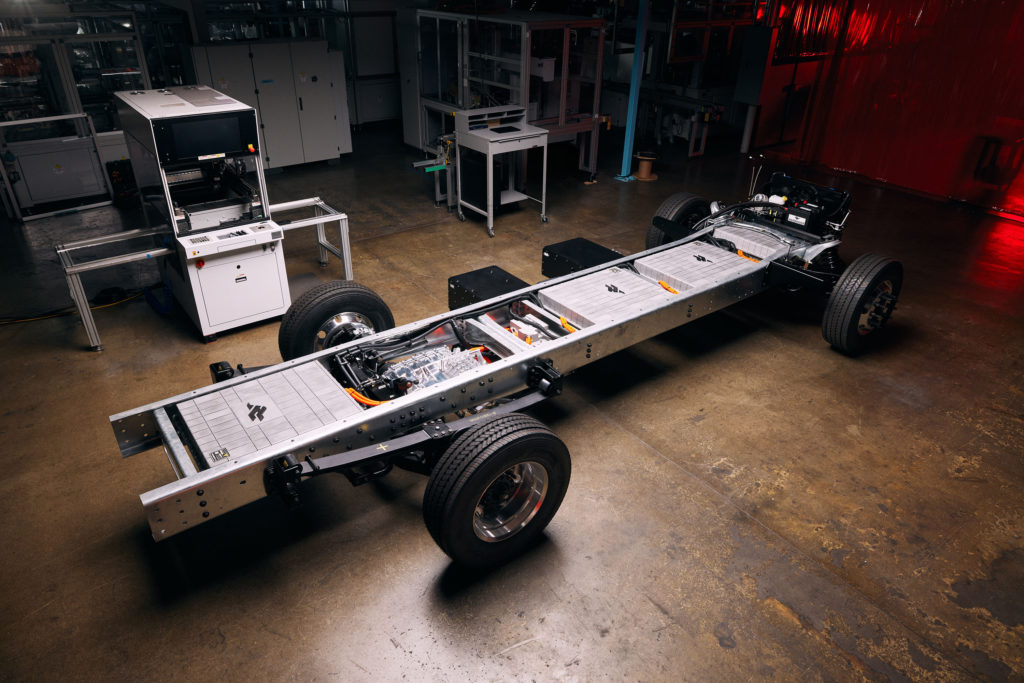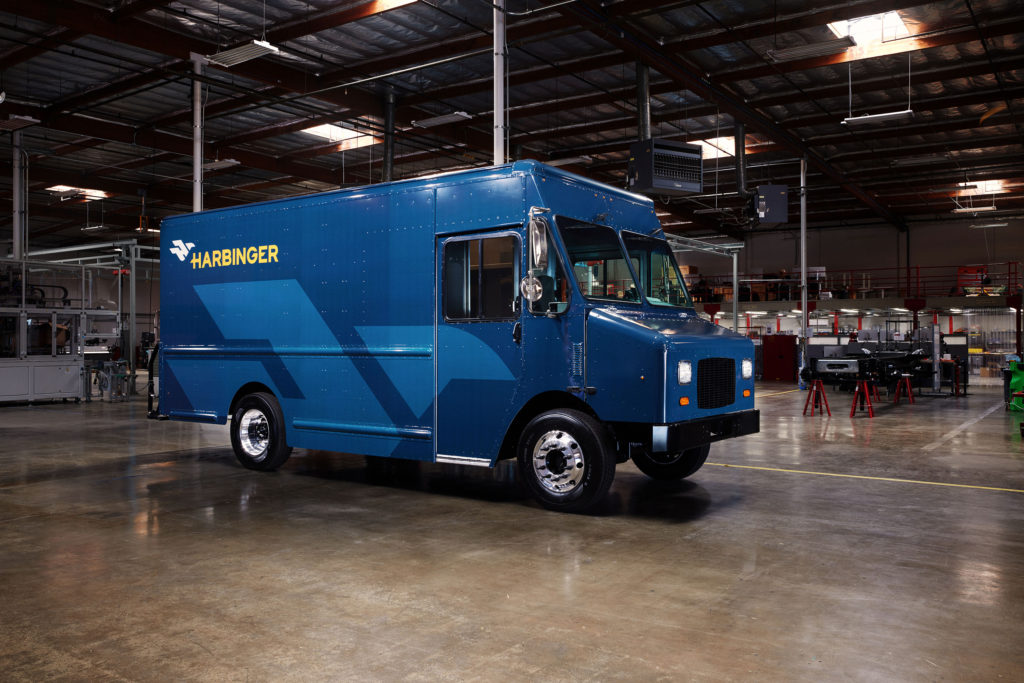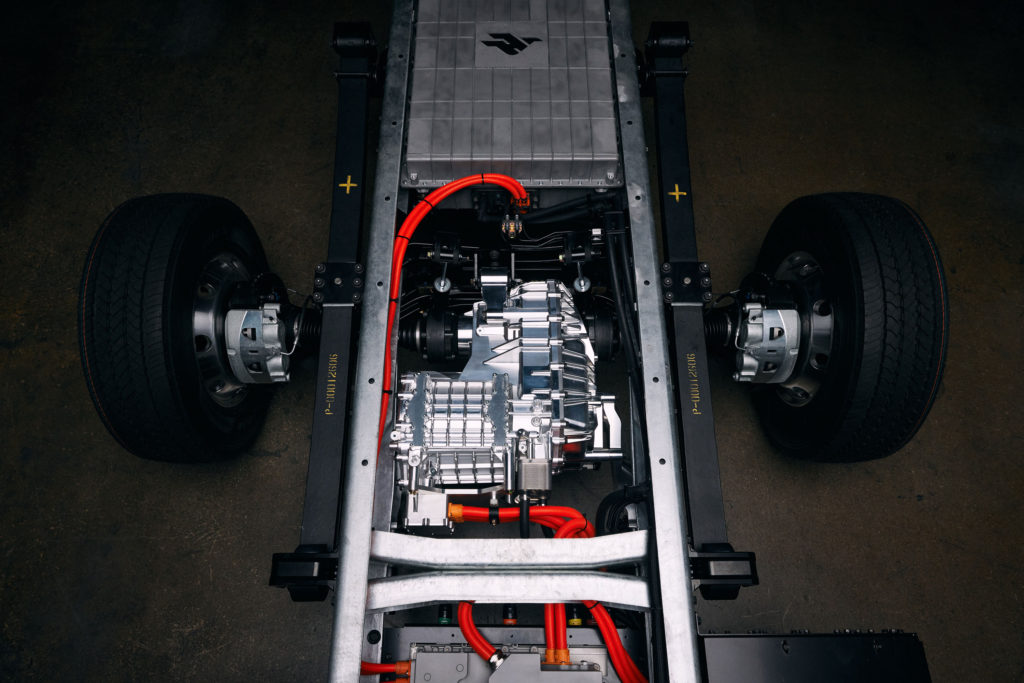From passenger cars to pickup trucks, the world is slowly going electric, but when it comes to replacing fossil fuels on a truly meaningful scale, “We believe there’s no better opportunity than medium-duty vehicles,” said Phillip Weicker, chief technology officer and co-founder of Harbinger in an interview with EV Pulse. Delivery vans and their kin operate every day, carrying massive loads untold miles. In the process, these vehicles also burn huge amounts of petroleum and produce vast quantities of nasty emissions. Greening-up this rough-and-tumble vehicle segment is low-hanging fruit that can make a massive difference.
Headquartered in Los Angeles, California, Harbinger was founded in early 2021 with the goal of electrifying and, in the process, redefining the medium-duty vehicle segment. To achieve this, the company is developing a flexible and versatile platform that can be upfitted as a walk-in van, utility vehicle or even motor home.
SEE ALSO: Blue Arc’s electric delivery vehicle is built from the ground up to be better
Weicker explained, Harbinger is exclusively developing medium-duty offerings, “What we believe is a very important and as-yet neglected piece of the vehicle market.” Catering to this segment’s unique needs, he added that Harbinger is a vertically integrated company, with expertise in powertrains, battery packs and motors, all the areas they need to build capable and competitive vehicles.

Appealing to a diversity of commercial customers, Harbinger plans to offer a range of all-electric, medium-duty chassis ranging from Class 4 to Class 7, with weight ratings between roughly 16,000 and 26,000 pounds. Four wheelbase lengths will be on the menu, too — 158, 178, 190 and 208 inches. At least initially, the company’s 800-volt, liquid-cooled modular battery system will be offered in four capacities, with 70 kilowatt-hours being the smallest, 175 the largest and 35-kWh increments in between. For a Class 5 vehicle, this is expected to get you between 85 and 205 miles of range, which should be ideal for commercial customers that recharge at depots every night.
But why focus on medium-duty vehicles? Weicker noted that smaller, lighter rivals like the BrightDrop Zevo 600, Ford E-Transit and Rivian EDV aren’t ideal in all situations because, “They have a couple of principle drawbacks for commercial operators.” This includes comparatively low cargo volumes and capacities because they typically have gross vehicle weight ratings (GVWR) less than 10,000 pounds. “And then the second topic is durability,” Weicker added. Lighter-duty delivery vehicles are “quite limited to how much life you can get out of them in commercial service,” maybe 3 to 5 years in some applications, which is not great, especially when compared to true medium-duty offerings, which may last 15 or 20 years. These reasons — and others — are why Harbinger went with a robust body-on-frame chassis configuration. The company’s platform is designed to last for decades, to give customers a standard operating life of 450,000 miles.

Aside from a rugged foundation, Harbinger’s design also features an independent front suspension with a rack-type steering system and steer-by-wire for greater riding comfort and improved handling. This is unusual stuff to see in a commercial-grade vehicle, but drivers will undoubtedly appreciate them. Things get even weirder, though, as you move to the back. Unexpectedly, the rear suspension is built around a de Dion tube. This decidedly old-school design dates to the earliest days of the automobile, though it still offers important benefits. The de Dion tube functions like a solid axle but also helps reduce detrimental unsprung mass by allowing the motor, inverter and gearbox to mount directly to the frame. The axle, supported by traditional leaf springs is also fully floating, something Weicker described as “the first of its kind.” Harbinger’s design also eliminates the need for a drive shaft, which leaves more space between the frame rails for batteries.
This vehicle’s 14-pole permanent magnet motor should provide plenty of scoot for a medium-duty truck. Expect 470 horsepower and around 1,142 pound-feet of torque.
WATCH THIS: We test the range of the Ford E-Transit at maximum payload
Beyond a long service life, cost is another major factor commercial customers consider when purchasing vehicles, in fact, it may be their No. 1 priority. Going with a medium-duty delivery van may cost more up front, but money can be saved by having fewer drivers and vehicles out on the road, something that also helps with congestion and pollution problems. “The cost of using a true medium duty-truck for many operators is the right answer,” said Weicker, since there may be up to 200 stops per day on your typical parcel-delivery route. If you can handle that with one truck and a single driver, companies will come out ahead.

“The key to success with electrification is [offering a product] that fits into existing use cases,” said Weicker, and Harbinger’s vehicles should be sized right, built to last and offer plenty of flexibility for customers. Of course, competitive pricing doesn’t hurt, either. Specifics have not been announced yet, but Harbinger’s vehicles are expected to carry zero price premium over comparable combustion-powered rivals. The first Harbinger chassis are expected to reach customers in late 2023 with volume production following at some point in 2024.

